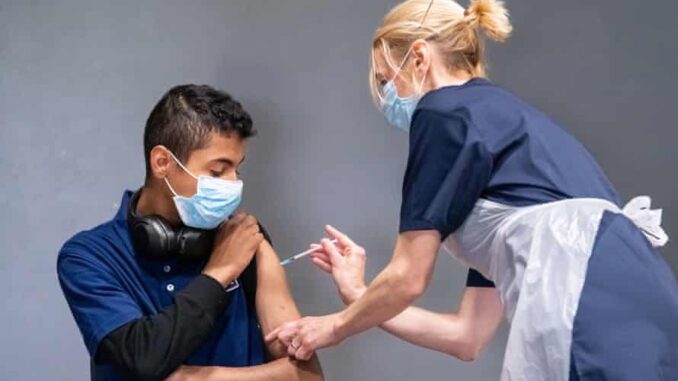
Public Health England reported that about 27,000 lives in England have been saved by Covid-19 vaccines, higher than the previous estimate of 10,400 lives. Why are these estimates so different?
These are not statistics in the usual sense; researchers cannot magically count the people who would be dead in parallel universes in which vaccines were not available. They need to build mathematical models of what would have happened in these “counterfactual” worlds.
The first approach looked at vaccine take-up and Covid deaths 31 days later in three age groups (60-69, 70-79 and over-80s), and estimated how many more people would have died up to the end of March 2021 had nobody been vaccinated.
This basic analysis considers only the direct effects of vaccination on mortality, but vaccines also have indirect effects through dampening transmission. The PHE/MRC (Medical Research Council) Biostatistics Unit model is a more complex “transmission dynamics” model, expressing in mathematics how the virus progresses through populations. They use extensive data such as Covid-19 deaths by age and region, and antibody samples, and their model simulates the numbers of infections and deaths without any vaccinations. Up to 19 June, they estimate a reduction in 7.2m infections and 27,200 deaths. Of course, these are comparisons with a rather unreal parallel world – if no vaccines were available, government policies and social reactions would have been different. It’s worth noting that other models estimated locking down a week earlier in March 2020 would have saved more than 20,000 lives.
It’s good to explore the same question through competing approaches. Many independent teams come up with different estimates of the reproduction number R, from which a committee has to come to a consensus. We return to George Box’s quote: “All models are wrong; the practical question is how wrong do they have to be to not be useful.” No model will be “correct”, and the quoted uncertainty interval of 26,100-28,400 deaths should be taken with a pinch of salt, as it assumes the model is the truth. While the modelling approaches differ, both methods agree vaccines saved thousands of lives.
- David Spiegelhalter is chair of the Winton Centre for Risk and Evidence Communication at Cambridge. Anthony Masters is statistical ambassador for the Royal Statistical Society


Be the first to comment